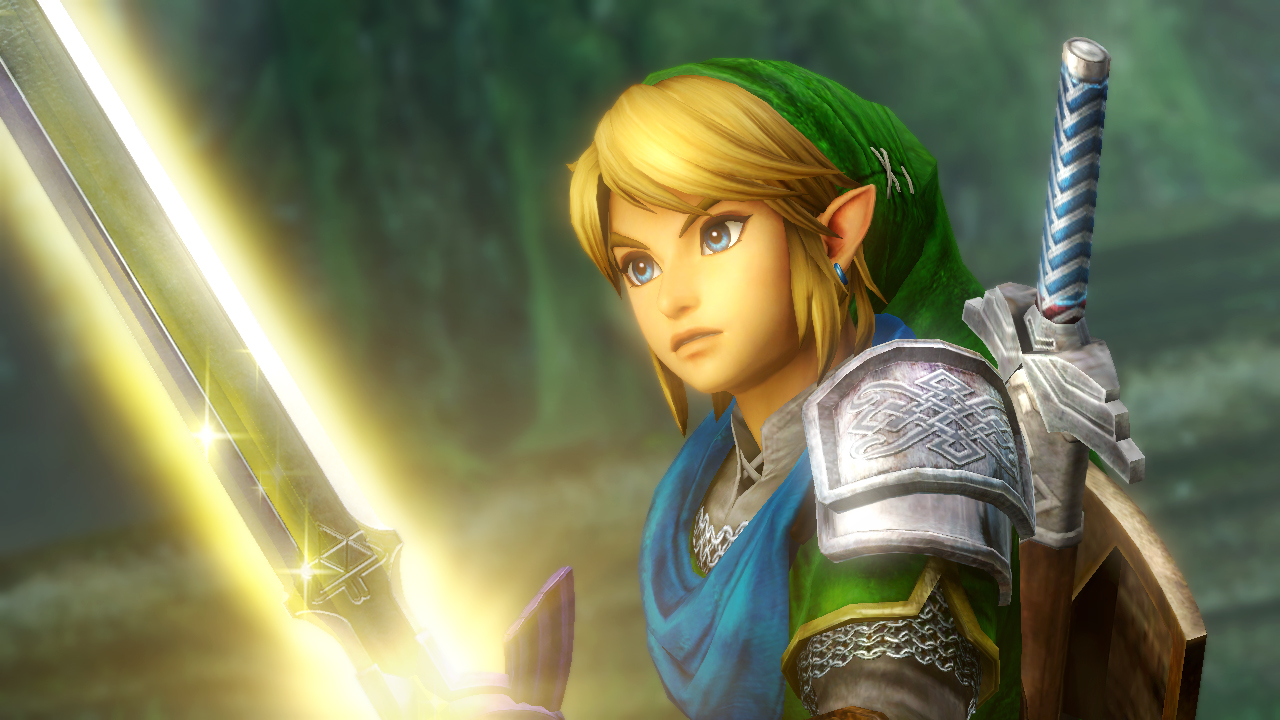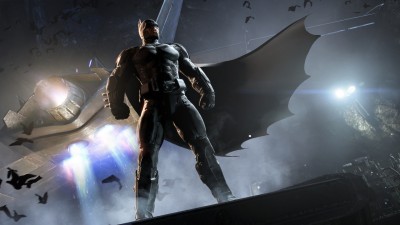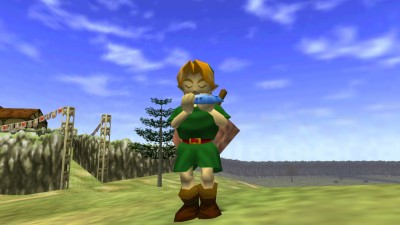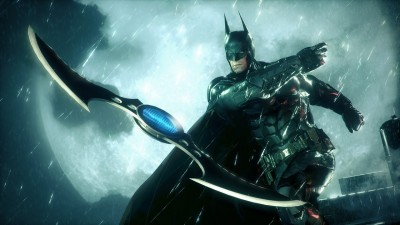The Warriors series (known as Musou in Japan) is unique. There are few other games that play like its numerous iterations, but the fact that multiple Musou games are released each year means that few to no players have a problem with that. There doesn’t need to be a Musou competitor because Musou is its own competition. To attempt to break into that market would be a waste of everyone’s time.
But Musou, for the most part, has grown stale. Dynasty Warriors, the flagship Musou, does change from year to year - but rarely in a truly meaningful way. It’s up to the spinoffs to do the heavy lifting. Not in mechanical terms – there are the same blandish mechanics no matter which Musou you play – but superficial ones.
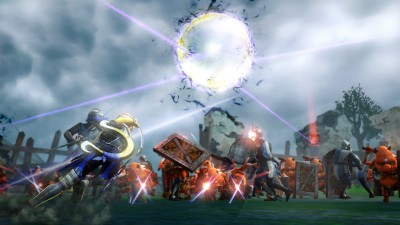 Of them, Hyrule Warriors feels like a breath of fresh air. In a fantastical world, there’s a bit more leeway to just go crazy, and Hyrule is a more compelling location than historical China, Japan, or whatever world Gundam is set in. There’s only so many times you can return to those wells before growing tired of it, but Hyrule is something new. And the chance to take down Link as Ganandorf in an actual Zelda-ish narrative is an exciting one. To some people, that may justify the game’s existence.
Of them, Hyrule Warriors feels like a breath of fresh air. In a fantastical world, there’s a bit more leeway to just go crazy, and Hyrule is a more compelling location than historical China, Japan, or whatever world Gundam is set in. There’s only so many times you can return to those wells before growing tired of it, but Hyrule is something new. And the chance to take down Link as Ganandorf in an actual Zelda-ish narrative is an exciting one. To some people, that may justify the game’s existence.
On the other hand, the game feels incomplete. In the time I’ve had it, Hyrule Warriors received a not-insubstantial patch that added an entirely new mode, as well as a new weapon and some other features, and a bunch of DLC has been announced (some free, some not) as well. But whereas the new tracks and characters for Mario Kart 8 felt like a breath of fresh air from a company that has been loathe to embrace DLC, the extra content here feels like it was either stripped from the game to make an extra buck, or that the game was rushed for release. That’s the only reason I can imagine for an extra mode being added in the weeks leading up to release, and neither feels particularly reassuring.
In my preview of the game a couple of months ago, I said the following: “The success of Hyrule Warriors will come down to raw numbers. If there aren’t at least 40 different playable characters, then why even bother. Even if it requires a little bit of trickery, there’s literally no excusive for not having everything a would-be fan might dream of.”
On the face of it, the game’s paltry 14-character roster is a disappointment at best and more like a betrayal. The last Warriors game had 83 playable characters. Eighty three. And even though many are holdovers from past entries, and it’s a function of adding to the roster rather than building from scratch, Hyrule Warriors can’t even manage 20% of that. There’s no excuse. It’s as simple as that.
Still, the characters that are there all feel unique. This is partly because of the wide variety of weapons (Link’s master sword is nothing like Darunia’s hammer), as well as the different weights of the characters (Link is fast; Darunia is painfully slow); but it really comes down to the animations.
Musou’s most fundamental – and controversial – element is its (many would say overly) simplistic gameplay. As with every other entry in the series, Hyrule Warriors is a button-masher. You run around through massive hoards of enemies, most of whom never actually bother to attack you, while pressing X until you feel like pressing Y.
Sometimes you press A to roll out of the way, but as you level up the need for that diminishes greatly. It’s not something that requires a lot of strategy or thought. There are a lot of reasons to dislike this on concept, and fans of intense action experiences will probably want 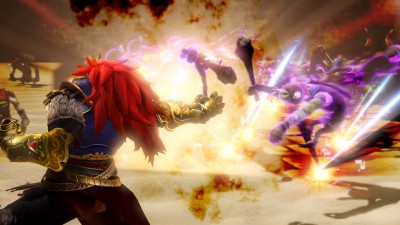 to burn any copies they come across, but there is still a place for this sort of game. Would I have been more interested in a Platinum-developed action game set in Hyrule? Yes. Oh my god yes. (Seriously, how amazing would that be?) But the game I have in front of me is still fun.
to burn any copies they come across, but there is still a place for this sort of game. Would I have been more interested in a Platinum-developed action game set in Hyrule? Yes. Oh my god yes. (Seriously, how amazing would that be?) But the game I have in front of me is still fun.
And for what it’s worth, there are the occasional puzzle-like bosses that break the gameplay up a bit. Certain enemies require you to use various Zelda-y weapons (bombs, hookshot, boomerang) to weaken them so they can be injured. It’s almost like fighting an actual Zelda boss. It sets this Musou game apart, but only a little bit. As cool as it is the first time around, they’ve all got simple patterns to memorize and exploit, and you’ll get bored of them pretty quickly. (There’s also an enemy that freezes you temporarily, and it’s absolutely maddening.)
But while the act of killing things can be tedious (or at least repetitive), the visual feedback is constantly exciting. The magic in Hyrule allows for a lot of crazy things to happ
en, so even though you’ll be pressing the same combination of buttons no matter who you are, the radically different look of the moves leads each character to better differentiate from the pack. They also have multiple weapons that have a pretty big impact on their playstyles. None of this actually makes up for the lack of characters, but it goes some way towards easing the blow.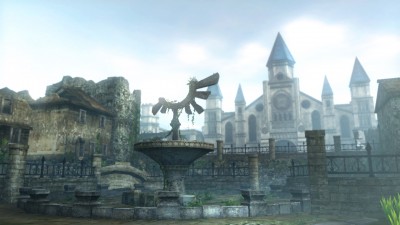
On a technical level, Hyrule Warriors surprises. The demo I played during my preview wasn’t particularly good-looking. It was acceptable, but it wasn’t going to impress anyone. Apparently I played a pretty early build, because the final product looks great. The levels are varied and interesting, and there are a ridiculous number of enemies onscreen, with no apparent slowdown. It’s a treat for the eyes, which something I never really expected to say about a Musou game, and another example that the Wii U can still put out some amazing visuals, despite its relatively humble innards.
But that’s only true in the singleplayer modes.
Co-op in Hyrule Warriors gives one person control of the TV and the other the Gamepad. Playing with a friend goes a long way towards easing the boredom and sense of repetition that almost definitely comes from playing the game over extended periods, and so I played almost the entire (short) campaign in co-op before then going through the other modes as well. But there’s a very serious graphical tradeoff. In co-op, Hyrule Warriors quite literally looks like a Wii game. I’m not exaggerating. I’ve played Samurai Warriors 3 on the Wii. It looks exactly like that. And I know that it’s because the game is being rendered twice, so it makes sense there’d be a trade-off, but it isn’t just an issue of looks.
In co-op, the enemy-count drops by at least two-thirds, and probably more than that. In singleplayer, enemies regularly fill the screen - but in co-op they’re sparsely placed here and there. This has serious gameplay implications, because numerous missions require you to kill X number of enemies in Y amount of time, and when there are so few enemies to kill, that becomes a far more difficult task. Even with two players in different areas, you’re hitting fewer enemies than you would alone, and that turns missions into a mad dash to overcome the game’s technical limitations.
Despite this, co-op makes the game immensely more enjoyable. I had a great time when I was playing with someone else, and chances are you will, too. As a more casual fan of the Zelda series, I thought it melded well with the Musou series. Fans of Zelda will likely enjoy what Hyrule Warriors offers, even given the low character count. But whether or not you actually stick with the game will depend entirely on your interest in pressing X until you decide to press Y. If that sounds painful to you, Hyrule Warriors won’t convince you otherwise. If you want to play the game in multiplayer, it’s absolutely a better experience on the whole - but it comes at a pretty severe technical cost.
As with any other entry in the Musou franchise, it suffers from a lack of depth. Its beauty is only skin deep (and sometimes not even then). But if you’re willing to overlook that and take it for what it is, there’s fun to be had in Hyrule Warriors. It’s definitely the most compelling Musou game I’ve played… though that isn’t saying much.
